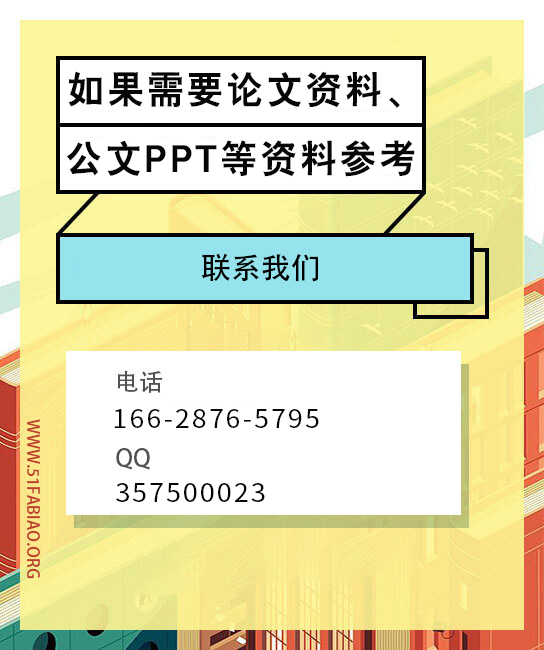1. Introduction
1.1 Research Background
For centuries, translation theory was source-text-dominated. Translated works wereconsidered derivative and therefore inferior, “not only second-hand, but also second-rate, andhence not worth too much serious attention.” (Hermans 1985b:8) In the study of translation,attention was paid primarily to assessing fidelity to the source-language text, without takinginto account the context and the influence of the target culture (see Baker 1993:236). As aresult, the function and role of translation activities in shaping significant historical andcultural events did not receive adequate consideration.With recent development in translation studies, in particular rewriting theory, the conceptof translation has been widened; the elements capable of being analyzed have become muchmore numerous; and the target-text and context. Thus, translation has been situated in a muchbroader and more complex research context. Not only translation proper and translators, butalso ostensibly “source-language” writings, which may often be instances of “rewritings”(Lefevere 1985a) or “unmarked/vaguely marked translations” (Robinson 1998d: 184), nowcome within the scope of translation studies. In addition, notions of patronage, poetics andideology have also become relevant. Critical journals educational institutions and publishers,as well as professionals such as critics, reviewers, teachers and translators, are all taken intoconsideration (Lefevere 1992a:14; also 2.2). More and more significance has been attached tothe role of translators and/or rewriters and the socio-historical function of their translationalactivities; in other words, to the way in which translators and /or rewriters “manipulate” agiven society in order to “construct” the kind of “culture desired” (Gentzler 2001a: x-xi).Extending the scope of translation studies to cover rewriting not only makes possible amore appropriate cover age of the multiple forms of translation activity, but also provides anew perspective-the perspective of descriptive translation studies-from which to re-considerthe key role played by leading figures during major cultural transformation in history.
...........
1.2 Research Questions and Methodology
1. Why the Main Street was chosen for translation by Pan Qingling in 1970s?2. What kind of ideology and poetics influence Pan Qingling in this translation?3. Who are the patronages that may influence and guide Pan Qingling’s translationpotentially?This paper mainly uses descriptive/ explanatory method which primarily focuses on theobjective description and introduction of various translations. For example, in certain givenperiod of history, what kinds of translation are chosen to be translated? Why thesemasterpieces are chosen? Who chose these masterpieces to translate? What positions of thesetranslations are in? Why certain translation strategies and methods are adopted in a given timeand place? Why some words, phrases and sentences are translated in these ways rather thanthe others? Aiming at a certain masterpiece of a certain writer, we can consider how manytranslations it has, who are these translators, what are the differences among these differenttranslation versions, what’s the circumstance of accepting a certain translation version, and soforth.
...........
2. Literature Review
2.1 Previous Research on Rewriting Theory in China and Abroad
It will introduce the previous research on rewriting theory at home and abroad in thissection which consists of two parts, the first of which is previous research on rewriting theoryin China and the second of which is previous research on rewriting theory abroad.Since the appearance of relevant introduction about rewriting theory in China at the endof 20th century, it has caught more and more attention from the scholars who has writtenmany books to introduce this translation theory.In April, 2000, Translation Theories in Contemporary United States, published by HubeiEducation Press, written by G
无忧论文库
- 市场调查与预测论文
- 工商管理论文
- 战略管理论文
- 人力资源管理论文
- 市场营销论文
- 酒店管理论文
- 电子商务论文
- 组织行为学论文
- 信息管理论文
- 成本管理论文
- 企业问题研究论文
- 客户关系管理论文
- 媒体管理论文
- 风险管理论文
- 旅游管理论文
- 技术经济学论文
- 财务管理论文
- 企业文化论文
- 管理论文
- ERP论文
- 国际商务管理论文
- 网络营销论文
- 信用管理论文
- 会展论文
- 运营管理论文
- 物业管理论文
- 生产管理论文
- 企业管理论文
- 品牌管理论文
- 质量管理论文
- 社区管理论文
- 团队管理论文
- 渠道管理论文
- 销售管理论文
- 企业社会责任论文
- DBA工商管理博士论文
- 微观经济学论文
- 宏观经济学论文
- 国际贸易论文
- 金融证券论文
- 农业经济论文
- 经济管理论文
- 投资论文
- 政治经济学论文
- 中国经济论文
- 经济学理论论文
- 产业经济论文
- 新经济学论文
- 社会经济论文
- 房地产论文
- 区域经济论文
- 低碳经济论文
- 农村经济论文
- 发展经济学论文
- 经济与行政管理论文
- 经济师论文
- 国际关系论文
- 行政管理论文
- 文书
- 政治学论文
- 电子政务论文
- 民主制度论文
- 社会主义论文
- 资本主义论文
- 马克思主义论文
- 邓小平理论论文
- 毛泽东思想论文
- 司法制度论文
- 思想政治教育论文
- 资源环境与城乡规划管理论文
- 党建论文
- 军事理论论文
- 公务员论文
- 会计论文
- 审计论文
- 成本会计论文
- 电算化会计论文
- 管理会计论文
- 会计理论论文
- CPA论文
- ACCA论文
- 税务会计论文
- 会计制度论文
- 财务会计论文
- 会计实习论文
- 会计论文发表
- MPACC论文
- 会计师职称论文
- 内部审计论文
- 审计风险论文
- 英语翻译学论文
- 英美文学论文
- 英语语言学论文
- 英语其它论文
- 商务英语论文
- 英语教育论文
- 小学英语教学论文
- 初中英语教学论文
- 旅游英语论文
- 计算机英语论文
- 英语教学论文
- 中外文化差异论文
- 英语毕业论文
- 英语论文范文
- 英语文学论文
- 跨文化交际论文
- 临床医学论文
- 护理医学论文
- 中医学论文
- 医学技术论文
- 医药学论文
- 外科论文
- 呼吸论文
- 妇产科及儿科论文
- 泌尿科论文
- 骨科论文
- 皮肤病论文
- 生物医学工程论文
- 神经学论文
- 口腔医学论文
- 医学论文范文
- 法医学论文
- 社会医学论文
- 整容医学论文
- 预防医学论文
- 医学检验论文
- 超声医学论文
- 放射医学论文
- 急诊医学论文
- 五官科论文
- 中西医结合论文
- 全科医学论文
- 康复医学论文
- 医学健康教育论文
- 病理学论文
- 基础医学论文
- 营养学论文
- 药学论文
- 环境法论文
- 刑法论文
- 版权法论文
- 国际商法论文
- 法学理论论文
- 行政法论文
- 民法论文
- 诉讼法论文
- 经济法论文
- 劳动法
- 海事海商法论文
- 法律史论文
- 公司法论文
- 民商法论文
- 婚姻法论文
- 票据法论文
- 森林法论文
- 商标法论文
- 宪法论文
- 新闻法论文
- 食品安全法论文
- 国际法论文
- 合同法
- 法律论文范文
- 知识产权法论文
- 税法写作
- 物权法论文
- 国际私法论文
- 国际海洋法论文
- 影视论文
- 广告设计论文
- 多媒体设计论文
- 纯艺术类论文
- 摄影艺术论文
- 美学论文
- 服装设计论文
- 动漫设计论文
- 室内装潢设计论文
- 戏剧论文
- 播音专业论文
- 舞蹈论文
- 环境设计论文
- 装饰与绘画论文
- 平面设计论文
- 化妆专业论文
- 戏曲论文
- 美术论文
- 电影论文
- 书法论文
- 环境艺术论文
- 工艺美术论文
- 绘画艺术论文
- 表演论文
- 导演/编导论文


